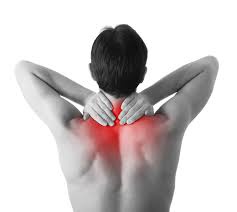View the full article
In the modern age, the influence of the work place on our health is crucial. A large part of our lives is devoted to our jobs. Poor ergonomics can exacerbate musculoskeletal issues, which can lead to persistent and uncomfortable pain. This article discusses common ergonomic principles, treatments options, and relaxation methods to reduce and prevent pain at work. This article also examines the importance of ergonomics at work in preventing pain.
Understanding Ergonomics at Work
Definition and Extent
Workplace ergonomics is the planning and organization of workspaces to consider the limits and abilities of the human body.
This includes organizing tasks, furniture and other items in a way that maximizes comfort, well-being and productivity.
The Effects on Well-Being
Ergonomics is more than just comfort. It's a key component in promoting long-term health and preventing work-related injuries.
Important ergonomic guidelines
Ideal chair and desk configuration:
Desks and chairs can be set up and raised to promote a neutral posture. This will reduce strain on the spine, limbs and neck.
Adjustable desks and chairs allow workers to customize their workstations according to their body type.
The location of the computer monitor:
Monitors should be placed directly in front of the user, at eye-level.
Keeping your arm at a distance from the screen can reduce eye strain.
Positioning the mouse and keyboard:
The mouse and keyboard should be set so that the wrists are in a neutral, relaxed position.
Ergonomic keyboards and mice can increase comfort and reduce the risk of repetitive strain injury.
Appropriate Lighting:
Adequate lighting is essential to reduce headaches and strain on the eyes.
Adjustable task lighting, and, where possible, natural light, will enhance the ergonomics and illumination of your workstation.
Regular Movement and Breaks
Incorporate frequent breaks into your working day and encourage you to move around.
Stretching techniques, micro-breaks and quick walks can all help to increase blood flow and prevent stiffness.
Workplace ergonomics to prevent pain
How to avoid repeated strain injuries:
Avoid repetitive strain injuries such as carpal tunnel syndrome by making ergonomic modifications.
The risk of chronic diseases linked to repetitive work is reduced by putting ergonomic principles in practice.
Prevention of lower back pain:
Avoid lower back pain by adopting an upright sitting position, supported by supportive chairs.
Regular lumbar support, and chair height adjustment can improve spinal health.
Reduce Shoulder and Neck Strain
Avoid neck and shoulder strain by using ergonomic desk arrangements.
Take regular breaks and stretch your neck and shoulders.
Handling Eye Strain:
The placement of your monitor and the lighting will help reduce eye strain.
Follow the 20-20-20 Rule to avoid eye fatigue. This rule suggests that you focus on an object located 20 feet away every 20 minutes for 20 seconds.
Restorative and Relaxing Strategies
Physical Medicine
Physical therapy can treat musculoskeletal disorders caused by poor ergonomics.
Exercises and manual therapies can help reduce pain, and improve flexibility and strength.
Ergonomic Modifications and Evaluations
The ergonomic assessment helps to locate and resolve workplace problems.
Routine workstation modifications are made to accommodate employee feedback.
Relaxation and mindfulness techniques:
Meditation and deep breathing can help reduce stress and tension at work.
Relaxation techniques can improve your general well-being by encouraging you to be composed and focused.
Programmes for Workplace Wellbeing
Employers can implement programs for workplace wellness, which include exercises and ergonomic education.
These initiatives reduce the likelihood of workers experiencing pain on the job by promoting a health-conscious culture.
Summary
The ergonomics of the workplace is crucial to maintaining a healthy and productive workforce. By implementing ergonomic principles, organizations can avoid pain and discomfort in the workplace. Integrating relaxation and treatment methods into the workplace can also support a comprehensive strategy for staff wellbeing. Investing ergonomic solutions can create a workplace that promotes employee health and well-being, while improving comfort and productivity.


No comments yet